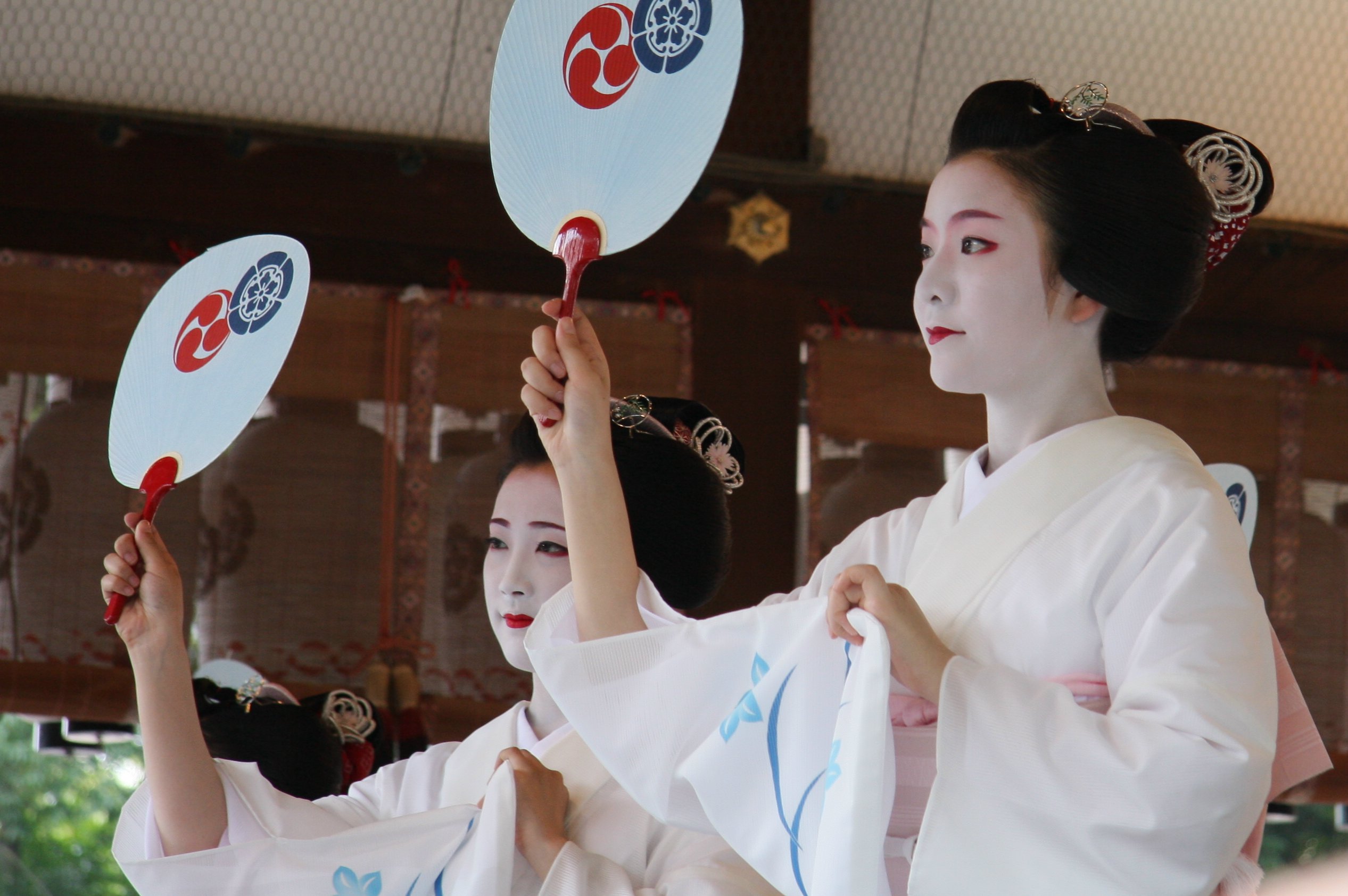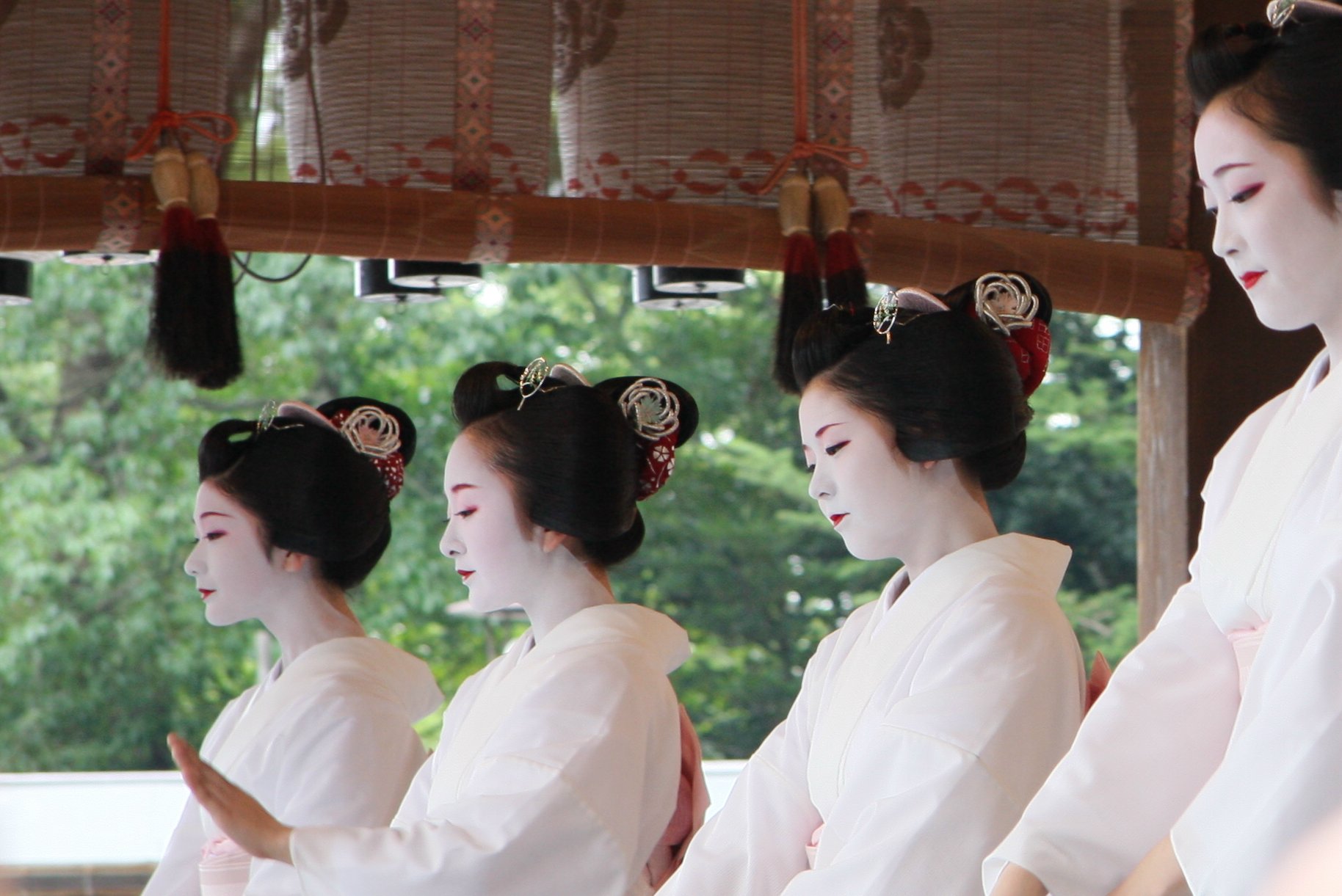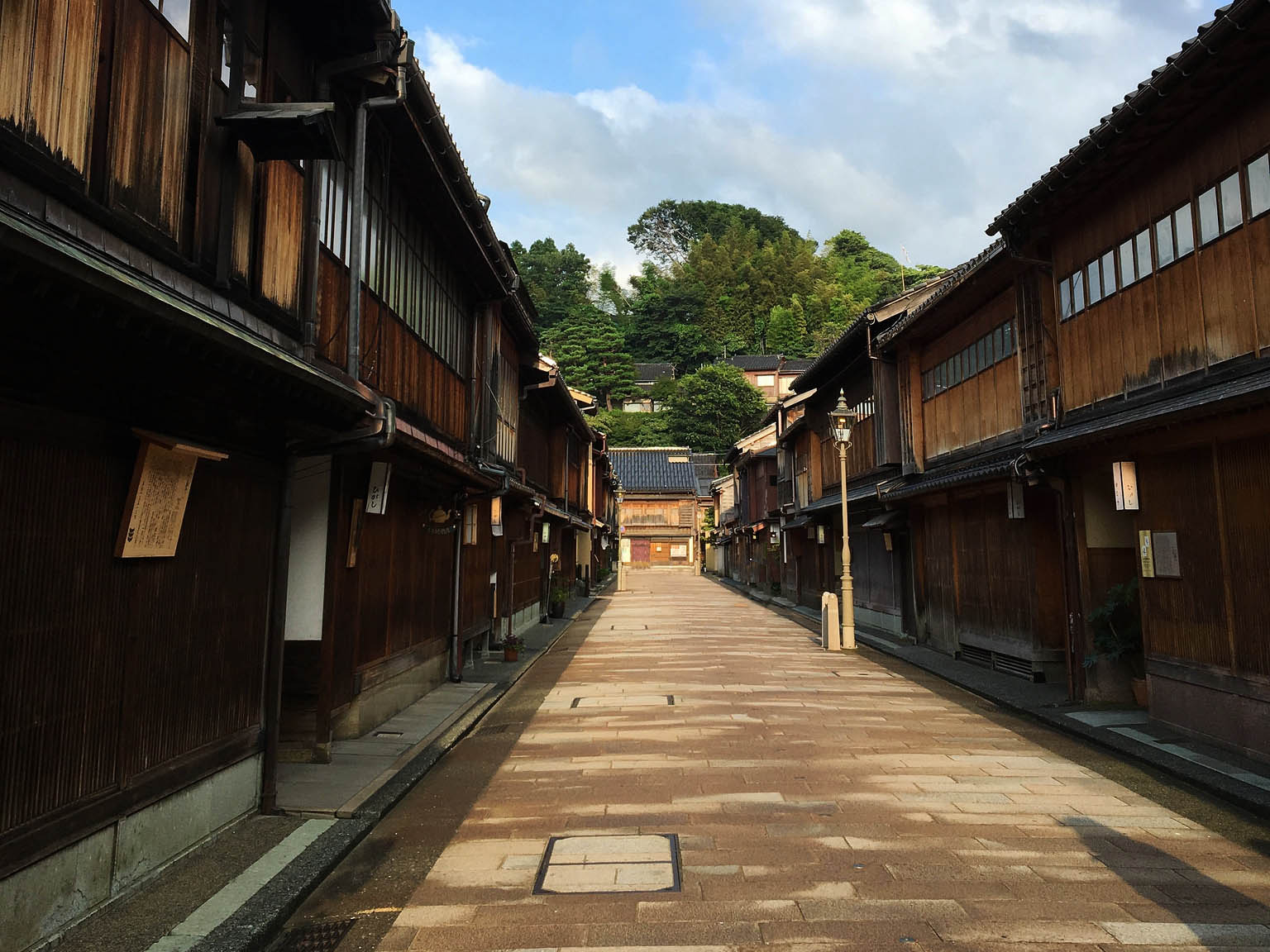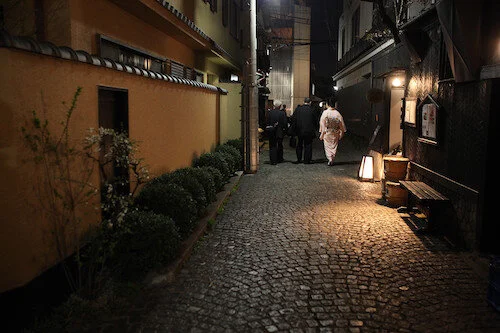The History of Geisha in Japanese Culture

Dancing with uchiwa fans at the Gion Matsuri Festival, ©Gejideji
A geisha, translated as an "art person" in Japanese, is a skilled artisan proficient in singing, dancing, and playing the samisen, a traditional lute-like instrument. In addition to these essential talents, a geisha excels in the art of conversation and may also showcase proficiency in flower arranging, conducting tea ceremonies, or calligraphy. You can learn more about the trying journey to become. The role of geisha in Japanese culture has evolved over hundreds of years to arrive at the iconic cultural status we recognize today.
There are still hanamachi that can be found throughout Japan. Pictured above a hanamachi found in Kanazawa. ©TOKI
The origins and rise of geisha in Pre-Modern Japan
Believe it or not, the original traditional geisha hardly resembled modern geisha in any way. The first geisha were, actually, male geishas or Taikomochi (太鼓持), also known as hōkan (幇間), appearing around the year 1730. It was only about 20 years later that female geisha began to appear in the forms of Odoriko (踊り子, meaning dancers) and shamisen players, and they quickly took over the profession, dominating it by 1780.
The original role of geisha was as an assistant to the Oiran, high-class, and every expensive Japanese courtesan who resided in the pleasure quarters of Edo (modern-day Tokyo), Kyoto, and other major cities in the Edo Period (1603-1886). As the courtesans feared geisha stealing their customers, regulations at the time forbade geisha from forming personal relations with customers. They were not even allowed to sit near guests.
However, patrons visiting the courtesans gradually began to gravitate towards the less expensive and much more socially accessible geisha, and by the 1800s, geisha for the most part were replacing Oiran as the center of parties. As the popularity of the oiran waned in the Meiji Period (1868-1912), the popularity of geisha only grew, as they became vital providers of hospitality and entertainment at dinner events for large companies and government officials. The popularity of geisha grew continually up until the 1920s when there were as many as 80,000 geisha throughout Japan entertaining guests. It was only as the country became involved in international warfare that the strain on Japanese society threatened the role and prestige of the geisha profession.
The effects of Westernization and war, and confusion about the term “Geisha”
After many decades of prosperity, geisha began to feel the effects of Westernization after the Meiji Period (1868-1912) and onward, and their numbers began to decline, especially with the approach of World War II. The dramatic decline in leisure time and resources decimated the hanamachi where the geisha worked, and in practically all parts of Japan, it became impossible to stay in operation. Even after the war ended, relatively few places reopened and faced even tougher regulations in a completely different Post-War Japan.
During the Post-War occupation of Japan, a large number of U.S. soldiers stationed in Japan had their first interactions with Japanese culture, which led to a variety of misunderstandings. One of these pervasive misunderstandings was the idea of "Geisha girls," an American mispronunciation and sweeping categorization of female workers in Japan that included prostitutes and nightclub hostesses, but rarely referred to actual geisha. Part of the reason for this confusion is that during the Post-war years, some women in the sex industry would dress up and claim to be geisha simply to entice Western men, despite having undergone none of the rigorous training that true geisha must complete. This led to a great deal of confusion throughout the West about the true role of geisha in Japanese society, with many mistakenly believing that geisha frequently worked as prostitutes, while the truth is very far from it.
Are geisha part of the sex industry?
One part of geisha culture frequently brought up to tie them to the sex industry is the idea of "mizuage," a ritual described and overly emphasized in Golden's Memoirs of a Geisha. Mizuage refers to a ritual where a young female loses her virginity, usually to a bidding suitor, and in this case, will soon become a full-fledged geisha. First of all, it is important to understand that this ritual was not practiced by all geisha communities and was indeed discouraged by many. In places where it was allowed, the focus of mizuage was not selling a service, but rather the rite of passage, something most women during this period felt was a perfectly normal part of an adolescent female's transition to womanhood. Of course, this ritual and all forms of prostitution were made illegal with the reforms of 1958.
To put it in simplest terms, no, geisha are not part of the sex industry, and thus should not be treated as such. While there is no expectation of working geisha to stay chaste, and while it is true that there is documented evidence of geisha both voluntarily and involuntarily participating in the sex industry, this should not obscure the fact that all true geisha undergo years of intense training in a variety of classical arts, as well as hospitality to become masters of their trade. Geisha have relied historically on these skills that they have honed over years and years of experience, rather than on their sexuality, to establish their role in Japanese society. Many geisha have expressed frustration with women they believe are prostitutes merely masquerading as geisha to lure customers, as we saw occurred after the war.
Modern Geisha and Geisha Society
Today in modern Japan, the number of geisha is a far cry from the pre-war days, now at around 1,000, most of whom work in Kyoto, often attending gatherings at tea houses and ryoutei (料亭), a kind of luxurious Japanese restaurant. There are some areas in Tokyo where Geisha Culture still resides, you can read more about it here -TOKYO'S HIDDEN GEISHA CULTURE. Contrary to the portrayal in "Memoirs of a Geisha," the notion that geishas cannot marry is inaccurate. In Kyoto, geishas desiring marriage are required to cease their practice, not to appear available to clients, but because a geisha is expected to be fully committed to her craft, marriage could distract her. This dispels the misconception that geishas are bound for life and highlights the varying practices concerning marriage in different regions. While they may not occupy as central a role in the Japanese hospitality industry, interacting with a modern geisha can still be an excellent opportunity to experience the essence of Omotenashi, the somewhat abstract concept of both visible and invisible hospitality in Japanese culture, and a way to learn about an important aspect of Japanese history and culture, You can learn more about Omotenashi here - "OMOTENASHI" : THE PHILOSOPHY OF JAPANESE HOSPITALITY

Geiko performing at the Gion Matsuri, a yearly festival that lasts throughout the month of July. ©Gejideji
RELATED EXPERIENCES
Geisha entertainment in Tokyo
Experience one of the few remaining hidden geisha districts in Japan. Find beauty and charm in the performing arts of Japan's most famous and historical entertainers.
RELATED ARTICLES







